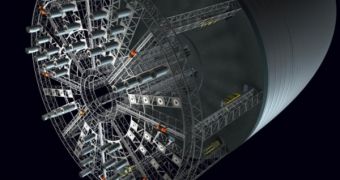A group of universities, organizations and space personalities proposes a new concept for reaching the Red Planet simply and effectively, one that could bring the goal of exploring Mars within our lifetime even closer to reality. The group says that using refueling stations could make the journey safer and faster at the same time.
The way stations the group proposes are collectively called the Stairway to Mars. They are, in essence, pit stops along the way, meant to break the monotony of the months astronauts will spend flying to Earth's closest neighbor. But the role of the stops would go far beyond combating boredom.
Under the new proposal, the space facilities would be used to service, repair and refuel spacecraft on their way to Mars, while providing astronauts with the opportunity to stretch their legs and relax a few times in the months it would take to reach their destination.
The Stairway to Mars concept was developed by the Space Development Steering Committee (SDSC), which is made up of the leaders of the Space Frontier Foundation, the Mars Society, and the National Space Society, as well as high-ranking employees at NASA, former astronauts, space advocates and so on.
The SDSC was founded by former New York University graduate psychology department visiting scholar Howard Bloom, and it sometimes provide commentaries on NASA budget and politics.
The system it proposes involves constructing a set of beams in space, at various distances between Earth and Mars. Robots traveling on rails could build these scaffolds, extending their own rails as the structures grow bigger and bigger.
The next step would be to add solar panels to these supports, providing power for each outpost. After this is done, various components, habitats and other parts can be added to each station, as needed. Each such stop would have a number of docks to support traveling ships.
“These plans are budgeted to cost less than the current NASA program for our next step in space – the $40 billion Space Launch System and Orion Capsule. What’s more, the first steps of the Stairway to Mars are achievable in three years,” SDSC representatives said in a recent statement.
At least one such station could be constructed in our planet's L1 Lagrangian point, where it will essentially hover in place with regards to the Sun-Moon-Earth system. Other similar points could be discovered in space through studies, Universe Today reports.

 14 DAY TRIAL //
14 DAY TRIAL //